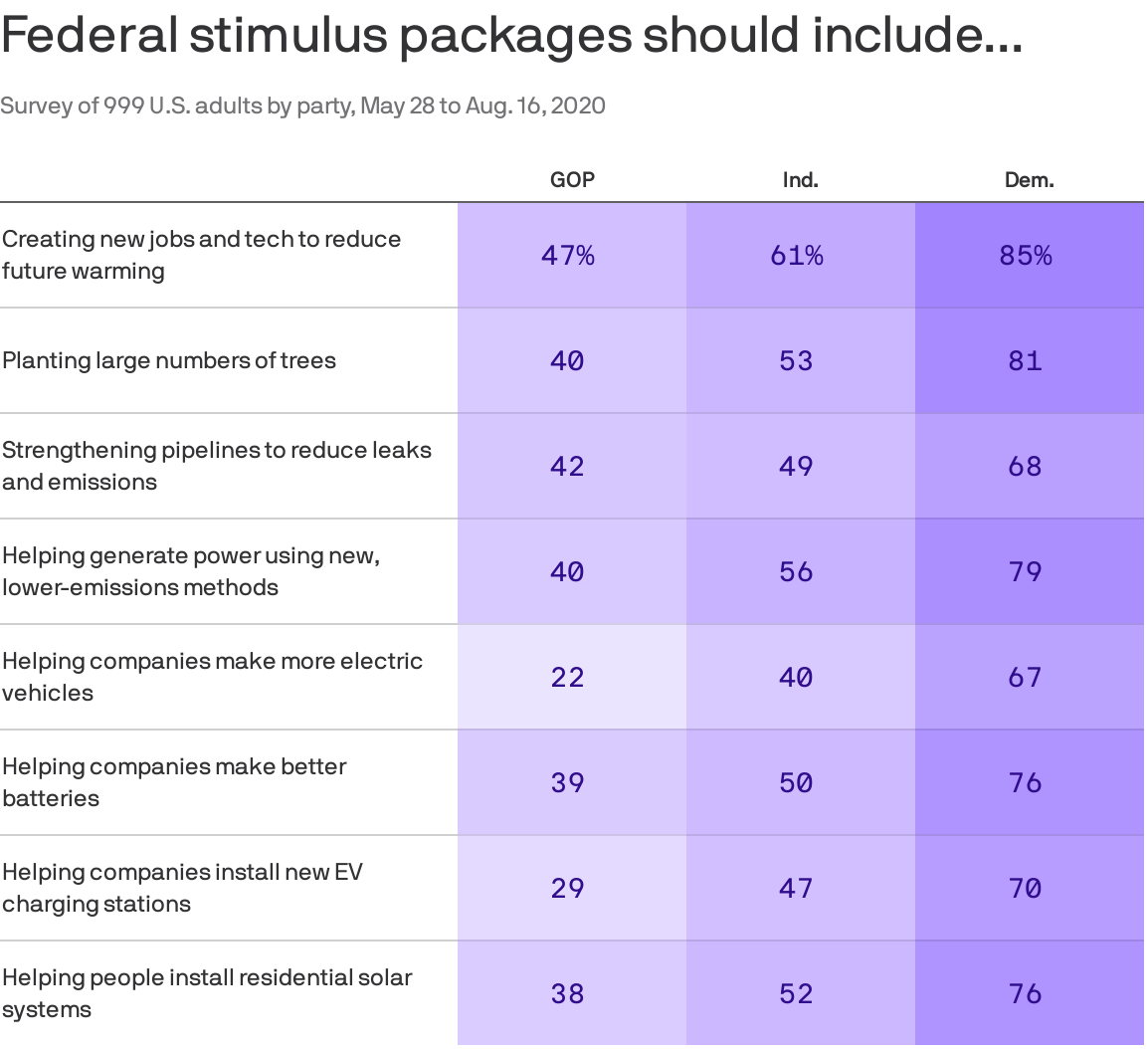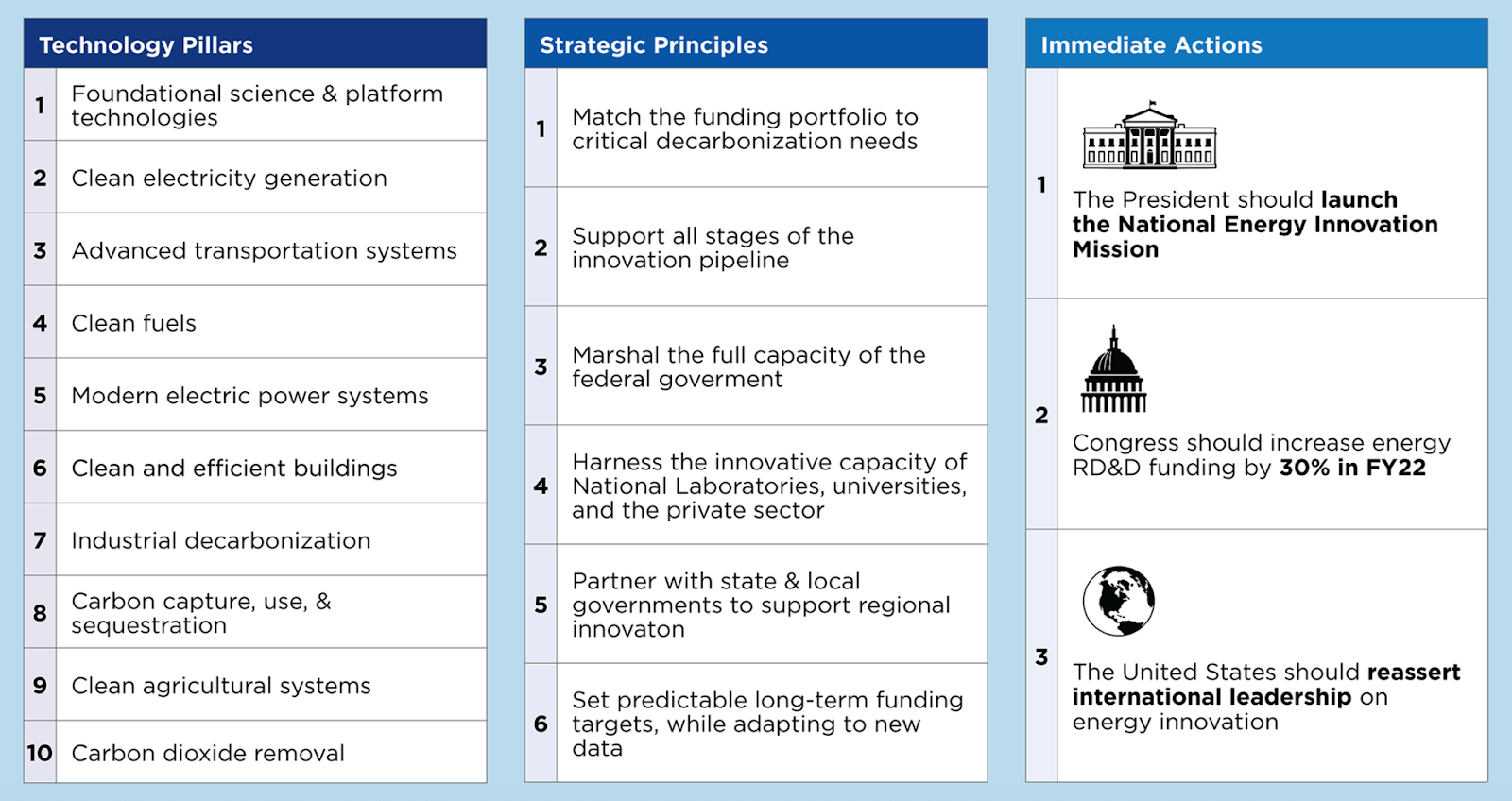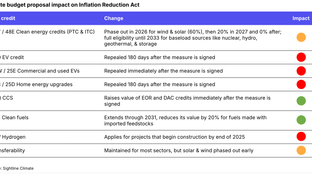
🌎 Overheard at LCAW #252
Climate, capital, and carrots in London's new playbook
A new roadmap for shaping new energy innovation with Varun Sivaram
Happy Monday! Hope everyone had a lovely weekend.
In this issue, we break down Trump’s take on the One Trillion Trees Initiative (tl;dr, good for politics, unclear on plan) and have a robust conversation with Varun Sivaram, former CTO of ReNew Power and an energy research scholar at Columbia. Varun is proposing a new innovation mission focused on ramping up energy innovation R&D to combat climate change, while ensuring communities across the country can take part in the investment upside.
We follow on with more funding news including more EVs, SPACs, and biodegradable diapers as well as news on Alphabet’s newest moonshot and more climate tech jobs.
Thanks for reading!
Not a subscriber yet?
Lots of headlines this week about Trump’s recent announcement of an interagency council to support the UN’s One Trillion Tree Initiative (1T.org). Companies leading these efforts across the US are here and a good breakdown of the news is here.
Why is it relevant?
👎 Miss the forest...
👍 ...For the trees

In preparation for Nov 3rd, check out the Election Resources below:
🚌 Proterra, a Burlingame, CA-based electric bus maker, raised $200m in funding from Cowen Sustainable Advisors, Soros Fund Management, and Generation Investment Management. TechCrunch has more here.
🌱 Plenty, a San-Francisco, CA-based agriculture startup, raised $140m in Series D funding from Softbank Vision Fund 1 and Driscoll’s. More here.
🌱 LiveKindly, a Los Angeles, CA-based collective of plant based food brands, raised $135m from Blue Horizon, EQT, Griffith Foods, and others. More here.
🚗 Arrival, a UK-based EV maker backed by Hyundai and Kia, raised $118m in funding from Blackrock. More here.
👶 DYPER, a Scottsdale, AZ-based maker of eco-conscious diapers, raised $20m in funding from Craftory and HCAP. More here.
♻️ Nordsense, a Denmark-based provider of smart waste management solutions, raised $8.4m in Series A funding from ACME Capital and the Danish Growth Fund. More here.
⚡ Linear Labs, a Fort Worth, TX-based developer of fully modular electric motors and generators, raised $6m in funding from Champion Hill, Lowercarbon Capital, Kindred Ventures, and others. More here.
🏗️ Cove.tool, an Atlanta, GA-based startup providing building performance analysis focused on energy efficiency, raised $5.7m in Series A funding from Mucker Capital, Urban.us, Knoll Ventures, and TechSquare Labs. TechCrunch has more here.
☀️ SunDensity, a Rochester, NY-based creator of Photonic Smart Coating for utility solar power, raised $2.5m in Seed funding from Clean Energy Ventures, Luminate, and Clean Energy Venture Group. More here.
🔥 Dryad Networks, a Berlin, Germany-based startup harnessing its large-scale IoT network to provide ultra-early fire detection services, raised $2.1m in Seed Funding from STIHL Digital, German energy firm LEAG, and Brandenburg Kapital. More here.
🌱 Rise Gardens, a Chicago, IL-based maker of indoor, hydroponic garden systems, raised an undisclosed amount in Seed funding from the Amazon Alexa Fund. More here.
RMG Acquisition II, a SPAC targeting ESG companies, filed for a $300m IPO. More here.
Advent Technologies, a fuel cell maker, is going public via merger with SPAC AMCI Acquisition, with the deal valuing the firm at $358m. More here.
Fluence, an energy storage technology provider, has acquired Advanced Microgrid Solutions, an AI-driven optimisation software platform for energy storage. More here.

Varun Sivaram, Senior Research Scholar at Columbia University Center on Global Energy Policy
This week, we chatted with Varun Sivaram – a physicist and clean energy expert. He is currently a senior research scholar at the Center on Global Energy Policy at Columbia University and was formerly Chief Technology Officer of ReNew Power – India’s largest renewable energy firm. [The newsletter version has been edited lightly for length, so check out our website for the full feature].
In September, Varun and co-authors strategically published “Energizing America: A Roadmap to Launch a National Energy Innovation Mission.” The authors propose launching a National Energy Innovation Mission and ramping up clean energy innovation spending to $25 billion annually by 2025. According to Bloomberg, “the book details down to the budget line item exactly how much money America should spend and how it should spend it”:

Can you talk a little about your past experience and what drove you to put together this report?
I'm committed to advancing clean energy innovation to achieve decarbonization, and have spent my career working across multiple sectors. I started in academia researching perovskite solar cells, worked in government and policy research, and invested in innovation in the private sector. Within every one of these sectors, innovation is necessary to achieve the energy transition and transformation we need. Energy, in particular, suffers from a market failure because of underinvestment in innovation.
Now, we have a bipartisan majority in Congress that's increasingly supportive of energy innovation and a potential Biden administration that’s put innovation at the center of its climate plan. We wrote Energizing America because we started to see more interest in clean energy R&D funding, but there was no roadmap to achieve the high-level spending targets. We wanted to establish a coherent strategic vision and give a detailed line-by-line action plan ahead of a potential transition. Over the last year, the team and I—spurred on by Jason Bordoff—got to work and put together this book.
What was the rationale behind the recommendation to create a National Energy Innovation Mission?
Today, clean energy R&D is too little and, frankly, too concentrated within the Department of Energy (DoE). The defense and health innovation missions over the last half century have demonstrated that a certain scale of funding – a whole of government approach – and durable political consensus are necessary for these innovation missions to really succeed in a long-term, sustainable way. So, we proposed a scale of funding at ~0.1% of GDP (which is still lower than health innovation funding) that will get us to the order of magnitude needed to create self-sustaining ecosystems – where universities and companies start to dedicate programs to innovation and know there will be sustained support and demand for their technologies.
In the health sector, this model has worked very well. For example, the National Institutes of Health has successfully supported all 210 of the FDA-approved drugs from 2010-2016. We want to replicate some of that success, but in our own unique way, for energy.
In the report, you show the disconnect between the sectors in the U.S. responsible for emissions and the corresponding research budget through the Department of Energy. Why do you think funding has been misallocated in the past?
The way that the federal government has been set up to support energy innovation was not with the explicit purpose of decarbonization, so this misallocation is not surprising at all. In the 1970s, the Department of Energy was created by consolidating a bunch of agencies and was structured with fuel and technology groups separate – rather than a holistic approach. Over time, that path dependence has led us to focus on funding technologies disproportionately. We support electricity innovation with half of our R&D dollars, despite it being less than half the source of emissions. Industry, transportation, or agriculture all contribute disproportionate emissions compared with the amount of funding dedicated to them. So we set out very intentionally to dedicate the largest proportional funding increases to the technology pillars under resourced today.
The big elephant in the room is the election coming up. Despite the fact that climate should be a bipartisan issue, to what extent will your roadmap’s implementation be contingent upon a Biden administration?
I am fairly confident that there is strong bipartisan support for clean energy innovation funding in Congress. We've already seen budgets rise in clean energy R&D despite the Trump administration trying to slash them every single year. This is one of the few areas where Republicans have been willing to display resistance to Trump. Still, I think it's going to be critical to have a Biden administration to orchestrate this whole ramp up, which isn’t going to be easy. You have to orchestrate a few dozen federal agencies, harness their complementary approaches, and make sure that you're funding different research performers. I'm fairly confident that he’s going to win, but we have a lot of work ahead of us.
In terms of the report itself, we’ve gotten wonderful reception from folks on both sides of the aisle. Democratic staffers from the committees which appropriate money have reached out to us asking for our spreadsheets. Kathy Castor, a Democrat who leads the House Select Committee on the Climate Crisis (which put out their own report) has also been amazingly supportive. If I leave you with anything, it's that R&D innovation is not polarizing. It's a Goldilocks situation where folks don’t realize that innovation is the one thing we can count on to be an ambitious and realistic climate policy, so we should be going full steam ahead on it.
The IEA’s annual World Energy Outlook continued its precedence of avoiding a peak oil demand prediction but projects a downward terminal slope for coal in favor of “solar becoming the new king of the world’s electricity markets”.
The NYTimes published “A Field Guide to the Election and Climate Change.”
Trump's flip flop on wildfire aid to California shows his prioritization of politics over morals.
Judge Amy Coney Barrett's Supreme Court confirmation hearing revealed the importance assigned to the high court in future climate change cases. Of all Barrett’s testimony, her stance on climate piqued the most backlash.
Philanthropies are filling a critical funding gap by taking on catalytic climate efforts to bridge the “Valley of Death” that mainstream investors dub to be too risky. (See our feature on Prime Impact Fund here.) Perhaps this shift is driven by younger members of wealthy families pressuring their family offices to review their investments for climate risk.
A recent UN report finds that, between 2000 and 2019, there were 7,348 major recorded disaster events claiming 1.2 million lives, affecting 4.2 billion people (many on more than one occasion), and resulting in ~$2.97T in global economic losses.
The Federal Energy Regulatory Commission (FERC) published its first carbon pricing policy ruling – bringing carbon pricing policy closer than ever to reality.
The extraction of rare metals like cobalt and lithium has left a dirty trail in the transition to a clean economy. The resources needed to electrify transportation raise a number of social concerns (e.g., ruining Chile's ecosystem and abusing human rights in the Democratic Republic of Congo).
The first ever Tesla Megapack was deployed this past week in California. The 182.5MW battery storage facility will be the largest storage project in California and sets the stage for more than ~10GW of potential storage projects to join the system in the next few years.
Cows are going net-zero, too. The Innovation Center for US Dairy launched the Net Zero Initiative to help dairy farms reach carbon neutrality by 2050. Nestlé has committed $10m.
As a reminder of where we’re at in the EV hype bubble, Chinese EV charging equipment provider StarCharge is planning an IPO weeks after its Series A.
To make or to buy? That is the question for EV auto execs who are increasingly worried that there won’t be enough factories building high-quality batteries.
A breakdown of what biodegradable really means.
Alphabet’s newest moonshot? A field-roving, plant-inspecting robo-buggy.
This chrome extension makes online orders carbon neutral at no extra cost.
Panera Bread will be the first company to label their sandwiches and soups with a “Cool Food Meal” badge, developed by the World Resources Institute, to identify low-carbon meal options.
💡 The Net Zero R&D Program: Submit your idea for direct air carbon capture or direct seawater carbon capture by December 4th to help the UK become the first net zero carbon basin.
🗓️ 10/20-10/23 Cleantech Open Global Forum: Tune in to watch cleantech startups pitch, learn about cleantech innovation, and network with over hundreds of professionals in the sector.
🗓️ 10/22 Co_Invest Cleantech: Clean Energy Trust is holding their annual cleantech innovation event, where you can hear from their early-stage cleantech portfolio companies and their newest sustainable investments.
🗓️ 10/21-10/23 MIT Energy Night: MIT is holding their annual Energy Night and this year it’s free! MIT Energy Night typically showcases close to 50 interactive presentations from MIT research labs, early-stage start-ups based on MIT technologies, and other energy-focused companies.
Data Scientist @Kobold Metals
Various Software Engineering Roles @Spoiler Alert
Marketing @Wren
Marketing Director @Daring Foods
Business Operations @Culdesac
Sustainability Biz Dev Manager @Microsoft
Director of Sustainability @Spin
Director of Programs & Operations @Rocking the Boat
Climate Infrastructure Project Manager @Prime Coalition
Head of Product @Nori
Various Aerospace Engineering Roles @Wright Electric
Feel free to send us new ideas, recent fundings, or general curiosities. Have a great week ahead!

Climate, capital, and carrots in London's new playbook

US plays popcorn politics with biofuels and beyond

Groundbreaking results from the geothermal developer’s main project